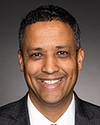Thank you for that question, Senator.
We are not in command and control of all these events simultaneously as the Ontario Provincial Police. Each police service of jurisdiction is responsible for the development and execution of a plan within their respective jurisdiction. We were playing an informal leadership role because we were best positioned to coordinate the access to the necessary resources.
We established, in co-operation with other police chiefs, what we referred to as a “public order hub”. There are only 10 public order teams in the province, of approximately a thousand members, and they are part-time members, so they're not ever all available at one time. Every member on a public order line in a public order uniform is a frontline police officer out of the front seat of a police car and out of a community.
It was a matter of trying to coordinate where everybody needed to be to mitigate what posed the greatest risk at the time and how we were prepared to move forward. We anticipated that Ottawa would be five to 10 days once a plan was developed and before we could have exhausted all opportunities and avenues of de-escalation: trying to reduce the footprint so when you do move to the application of force it is absolutely the minimal amount of force required to resolve the incident.
We're bound by the Ontario use of force model, as you know, and de-escalation always has to be the top priority. Our integrated planning team—which was hand-picked from around the province—of subject matter experts arrived in Ottawa on the 9th. By the 11th, they had proposed a plan of action; by the 13th that plan was accepted; by the 15th it was confirmed that it was ready to be operationalized, and then it was still three days before all the assets were available and ready to go.
It's not a direct answer, but I'm hoping it sheds some light into how we were attempting to manage these.


